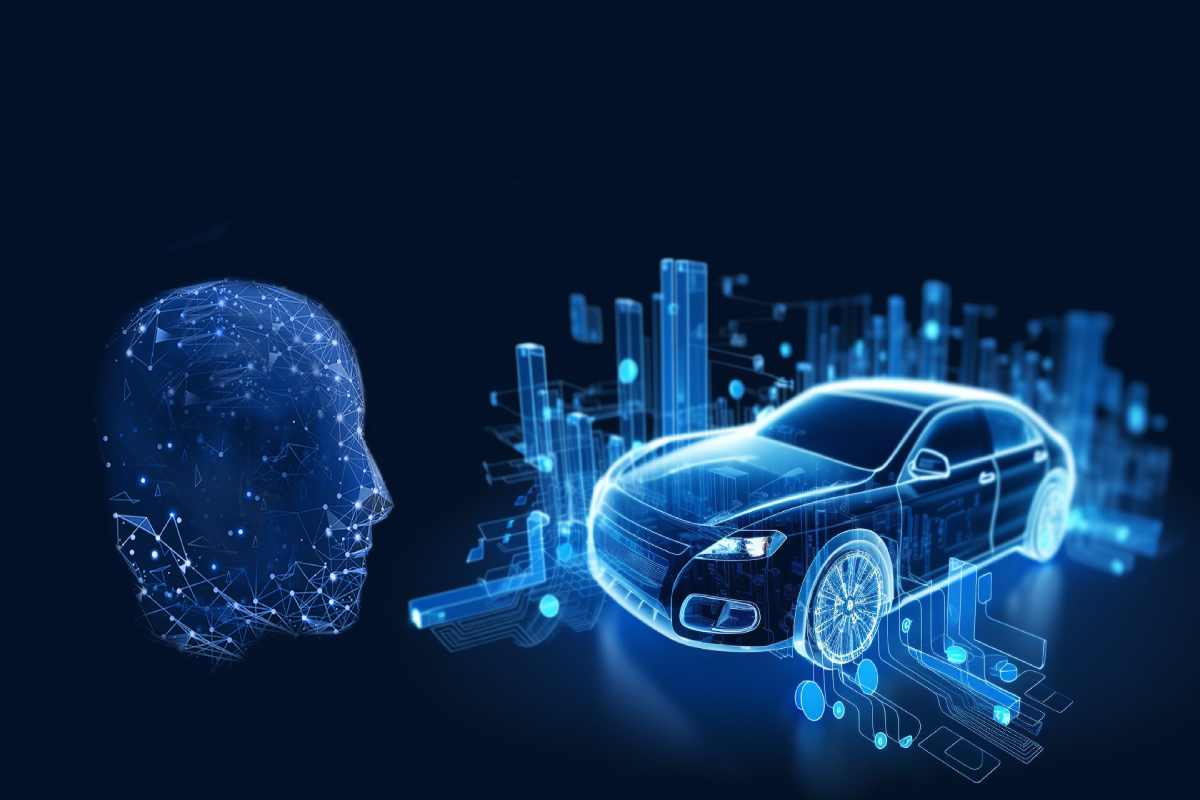
Software-Defined Vehicle
A Software-Defined Vehicle (SDV) is a modern automobile where the majority of its functions, including performance, safety, and user experience, are controlled and optimized through software. Unlike traditional vehicles, which rely primarily on mechanical components and hardware-defined functionalities, SDVs leverage software updates, artificial intelligence (AI), and cloud computing to enhance vehicle capabilities, improve safety, and enable greater customization.
This paradigm shift in automotive technology has revolutionized the way vehicles are designed, manufactured, and maintained. In this article, we explore the concept of SDVs, their key features, advantages, challenges, and their impact on the future of the automotive industry.
Key Characteristics of Software-Defined Vehicles
Primary features of a software-defined vehicle are advanced software frameworks to manage vehicle performance and enhance user experience. Here are some defining characteristics of SDVs:
1. Over-the-Air (OTA) Software Updates
SDVs can receive real-time software updates via the cloud, allowing manufacturers to enhance vehicle performance, patch security vulnerabilities, and introduce new features without requiring a physical visit to a service center. This capability ensures that vehicles remain up-to-date with the latest advancements in automotive technology.
2. Centralized Computing Architecture
Traditional vehicles use multiple electronic control units (ECUs) for different functions, such as braking, infotainment, and engine control. SDVs consolidate these functions into a centralized computing platform, reducing complexity and improving efficiency.
3. Artificial Intelligence and Machine Learning Integration
AI-powered SDVs can analyze data from sensors, cameras, and user interactions to optimize driving experiences. Machine learning algorithms enhance autonomous driving capabilities, improve fuel efficiency, and detect potential maintenance issues before they escalate into major problems.
4. Customizable User Experience
With software-defined architectures, SDVs allow users to personalize vehicle settings, such as driver profiles, infotainment preferences, and safety configurations. Some automakers even offer subscription-based software features, giving users the flexibility to enable or disable specific functionalities as needed.
5. Enhanced Connectivity and Internet-of-Things (IoT) Integration
SDVs are equipped with advanced connectivity solutions, enabling seamless integration with smartphones, smart homes, and cloud-based services. Vehicles can communicate with other cars, infrastructure, and traffic management systems, improving road safety and reducing congestion.
Advantages of Software-Defined Vehicles
The adoption of SDVs offers numerous benefits for consumers, manufacturers, and the automotive industry as a whole:
1. Increased Vehicle Lifespan and Performance Optimization
Through regular software updates, SDVs can improve fuel efficiency, enhance battery management for electric vehicles (EVs), and optimize engine performance. This extends the useful life of vehicles and keeps them technologically relevant for longer periods.
2. Enhanced Safety and Security
AI-driven SDVs continuously analyze road conditions, driver behavior, and environmental factors to enhance safety features such as adaptive cruise control, collision avoidance, and emergency braking. Additionally, software updates can patch security vulnerabilities and protect vehicles from cyber threats.
3. Lower Maintenance Costs
With real-time diagnostics and predictive maintenance features, SDVs can identify potential issues before they cause mechanical failures. This proactive approach reduces unexpected breakdowns and minimizes repair costs.
4. Personalized Driving Experience
SDVs offer a highly customizable user experience, allowing drivers to configure vehicle settings based on their preferences. From adjustable seat positioning to AI-powered voice assistants, SDVs redefine comfort and convenience.
5. Environmental Benefits
Electric SDVs play a crucial role in reducing carbon emissions by optimizing energy consumption through software enhancements. Features such as regenerative braking and AI-driven route optimization contribute to sustainability goals.
Challenges of Software-Defined Vehicles
Despite their numerous benefits, SDVs face several challenges that must be addressed for widespread adoption:
1. Cybersecurity Risks
With increased connectivity, SDVs are susceptible to cyberattacks that could compromise vehicle functions and user safety. Automakers must implement robust cybersecurity measures, such as encryption and multi-factor authentication, to safeguard vehicle software systems.
2. High Development and Implementation Costs
The transition to SDVs requires substantial investment in software development, cloud infrastructure, and AI-driven systems. Smaller automotive manufacturers may struggle to keep up with the financial demands of implementing SDV technology.
3. Data Privacy Concerns
SDVs collect and process vast amounts of user data, including driving habits, location history, and biometric information. Protecting user privacy and ensuring compliance with data protection regulations is a significant challenge for automakers.
4. Dependency on Software Reliability
A malfunctioning software update or system bug can negatively impact vehicle performance and user safety. Automakers must rigorously test software updates and provide fail-safe mechanisms to mitigate risks associated with software failures.
5. Infrastructure Limitations
SDVs rely on high-speed internet connectivity and cloud-based computing to function effectively. In regions with limited network infrastructure, the full potential of SDVs may not be realized, leading to inconsistencies in performance and user experience.
The Future of Software-Defined Vehicles
As the automotive industry continues to embrace digital transformation, SDVs will become increasingly prevalent. Here are some key trends shaping the future of SDVs:
1. Autonomous Driving Evolution
Software-defined architectures will play a crucial role in advancing autonomous driving capabilities. AI-powered SDVs will integrate with smart city infrastructure, enabling seamless navigation and traffic management.
2. Subscription-Based Vehicle Features
Manufacturers are shifting towards offering subscription-based features, allowing users to unlock advanced driving assist systems, entertainment packages, and performance upgrades through software subscriptions.
3. Enhanced 5G and Edge Computing Integration
With the expansion of 5G networks, SDVs will experience improved real-time connectivity, enabling faster data processing, cloud-based vehicle management, and enhanced vehicle-to-everything (V2X) communication.
4. Greater Sustainability Initiatives
Automakers will leverage SDV technology to create more energy-efficient and environmentally friendly vehicles. AI-driven battery management, eco-driving recommendations, and sustainable materials will further reduce carbon footprints.
Software-defined vehicles represent a fundamental shift in automotive technology, prioritizing software innovation over traditional mechanical engineering. By integrating AI, cloud computing, and IoT connectivity, SDVs offer improved safety, efficiency, and personalization. However, challenges such as cybersecurity risks, high implementation costs, and data privacy concerns must be addressed for SDVs to reach their full potential. As advancements continue, SDVs will play a pivotal role in shaping the future of transportation, offering smarter, safer, and more sustainable mobility solutions for the modern world.